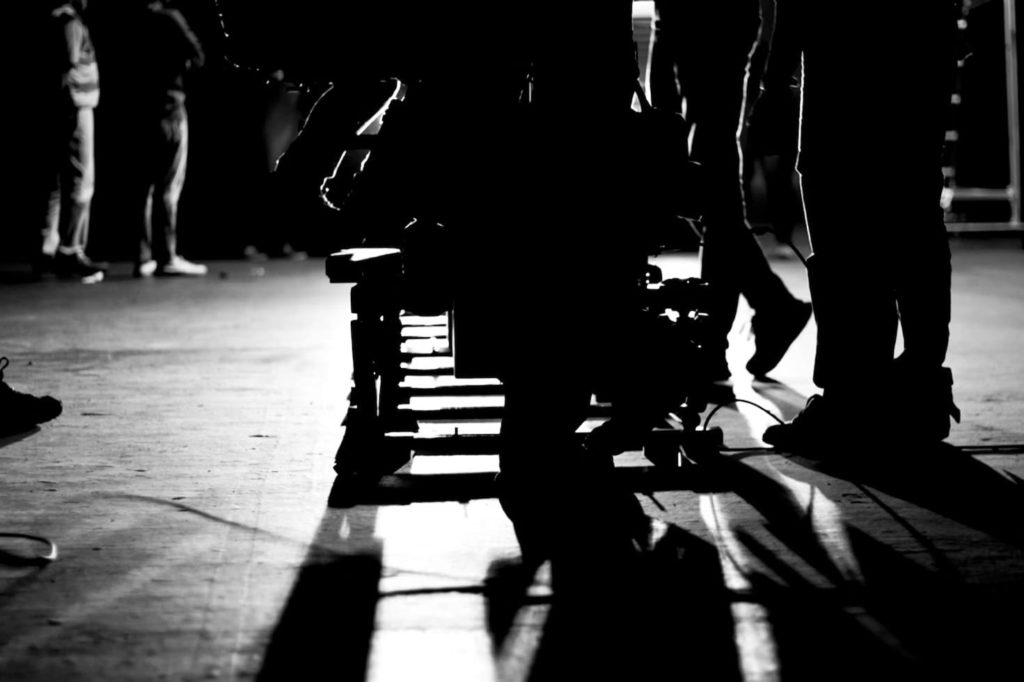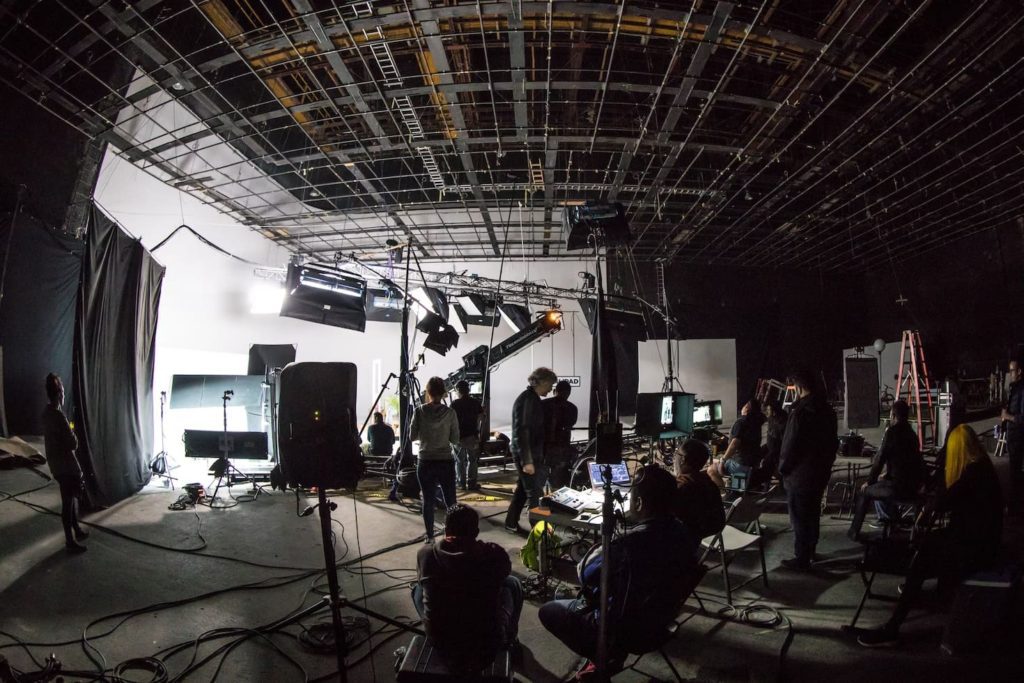Dolly Shot Explained: The Purpose and Uses of a Dolly Shot Explored
A dolly is a piece of filmmaking equipment, and when it is used, it results in a dolly shot. These are quite iconic in film and used for certain styles and effects of filmmaking.

A lot of people have heard of dolly shots, even if they aren’t involved in filmmaking. Certain directors are known for making this kind of shot a part of their repertoire, and using dollies to incredible effect. This is one of the shots that involves a great deal of movement, which can be a difficult thing to master. Done correctly, it can look incredible.
In this guide, we explore a dolly shot in film, TV, and other videos. What is the use of this kind of shot, and how is it different from other similar shots and techniques?
What is a Dolly Shot in Film?
Dolly shots in film are one of a few different ways that filmmakers can track movement. Shots with movement may be restricted to handheld footage, steadicam, or a gimbal. However, a dolly provides an option for tracking movement, too.
The dolly is a piece of equipment, effectively it is a cart that allows you to mount a camera on it. It then rolls along a track, or may even move independently on its own wheels.
Dolly shots can be used alongside many other effects and create a feel to the video. It is also something that can potentially be used as its own effect. Over the years, directors have found new and fascinating ways to use dollies and their tracks to create a certain look or to track their characters in a certain way.
If a director wants to create a sense of movement, they may use a dolly shot to do so. For instance, if they want to start with a character in frame and “dolly out” to create a wider shot and reveal more of the background. The dolly is simply an option for moving the camera backward and forward.
Types of Dolly Shot
There are many different dolly shot examples that can be seen in movies, and even other videos such as commercials and television shows.

Standard Dolly Shot
The standard dolly shot is a basic tracking dolly shot where the camera moves forward or backward on the dolly along a straight path. It can be used for simple tracking of characters or objects, but usually tracks forwards or backward. For instance, if a character is walking down the street, the camera may move on a dolly facing the character as they walk.
Side note: Tracking Shot vs. Dolly Shot
A tracking shot and dolly shot are easily confused. Tracking shots usually move alongside the actor. So, if they are walking down a street, the tracking shot may follow their movement in profile as they walk. It can get confusing, especially because dolly shots can track their subject.
Push/Pull Dolly Shot
A push dolly shot is achieved by moving the camera forward towards the subject, and a pull dolly shot involves moving the camera away from the subject. This gives a feeling of moving toward or away form a subject, and these shots can be used to intensify emotions, create tension, or draw attention to a particular element within the scene.
Dolly Zoom Shot
One of the most famous examples of the dolly zoom was in the 1975 film Jaws. As the dolly moves out, the camera itself zooms in. The subject stays in the same place in the frame whereas the background gains a sense of movement, often disorientating. In this example, it is used to create a sense of panic.
Arc Shot
These aren’t as common as some of the other forms of dolly shot. In an arc shot, the camera moves around the subject in a curved or circular path. This can add a visually interesting element to the shot. This can show the viewer a larger area or emphasize relationships between characters and their surroundings.
Reveal Dolly Shot
This is technically just another way of “dollying out” but it is deliberately done as a big reveal. This shot is used to slowly unveil a subject, scene, or location. The camera moves backward, revealing more and more of the surroundings as it pulls away from the subject. For example, this form of dolly shot may show more of a cityscape or reveal where a character is.
Double Dolly Shot
This is a technique that was largely popularized by director Spike Lee. It can be used to evoke many different emotions and feelings.
Double dolly setups use a traditional dolly with camera and operator on a dolly, but also put the actor on a separate dolly or on the same platform, meaning that they move along with the camera. This will take a lot of pre-planning and may come in at the storyboarding section of the filmmaking process.
This has some interesting effects. For example, it may appear that the actor stays in the same place while the background conveys a sense of movement.
What Are Dolly Shots Used For?

These are the main types of dolly shot, but what are dolly shot film scenes used for? What are the common reasons to include these types of shots and what impact can they have?
Following Characters in a Scene
Dolly shots are often used to track characters as they move through a scene. This helps maintain a consistent perspective on the character and creates a sense of continuity, making the audience feel like they’re alongside the character. If you are looking to produce an advert or commercial this could also mean the tracking of a product.
Revealing Information or Location
Dolly shots can be used to gradually reveal information to the audience. As the camera moves, it can unveil new elements in the scene, building suspense or adding layers to the story.
Emphasizing Emotions
The movement of the camera on a dolly can mirror the emotional state of characters. For instance, a slow, deliberate dolly shot can convey contemplation or sadness, while a fast dolly shot might represent excitement or urgency.
Building Tension
Some of the most popular dolly shots, such as push or pull shots, can be employed to create tension by literally bringing the camera closer to or further away from the subject. This can evoke a feeling of unease or anticipation.
Showing Scale and Perspective
Dolly shots can provide a sense of scale by moving the camera closer to or farther from objects or scenes. This can be used to emphasize the grandeur of a location or the intricacy of small details, for instance, dollying out on a battlefield and revealing thousands of people behind.
Adding Movement to Static or Boring Scenes
In scenes where characters are stationary, a dolly shot can introduce movement and energy, preventing the visuals from becoming static or visually monotonous.
Creating Cinematic Impact and a Cinematic Look
Dolly shots, particularly when combined with other camera movements or techniques, can add a cinematic flair to a scene, making it visually striking and memorable.
Highlighting Something in the Shot
By moving the camera towards or away from a specific element in the frame, dolly shots can draw attention to important details or objects. It can show the audience something that they are supposed to focus on or understand in the shot.
Creating a Dolly Shot
A dolly shot film scene can be incredibly effective if it is well executed. At Insight Studios, our team is proficient in using all kinds of effects like these and creating the ideal look and feel for the project at hand.
A dolly shot requires a camera mounted on a dolly. These come in a few different types, including:
Track Dolly: A track dolly is a wheeled platform that runs on a track. It provides smooth movement and is suitable for linear shots and the camera can often be manually moved along it.
Slider Dolly: A slider is a smaller, portable dolly that moves the camera along a short track. It’s versatile and can create subtle movements.
Motor Dolly: Motorized dollies can be controlled remotely and can execute precise movements, including curves and changes in speed.
Steadicam/Glidecam: While not strictly a dolly, these stabilizing systems can provide smooth tracking shots while the camera operator moves around.
The camera must be securely mounted, and the crew should take their time practicing the movements before the shooting phase begins. Dolly shots can be hard to get right and this means that the director may take multiple shots.
Conclusion – Utilizing the Dolly Shot
Dolly shots can be a way to add a lot of movement and intrigue to a film. It is a professional cinema technique, popularized by many directors and used for feature film as well as commercials and other video types.
Getting a dolly shot right can be challenging, but the impact is worth the effort. To get started bringing your visual dreams into reality with the help of a professional, experienced team, reach out to Insight Studios today.